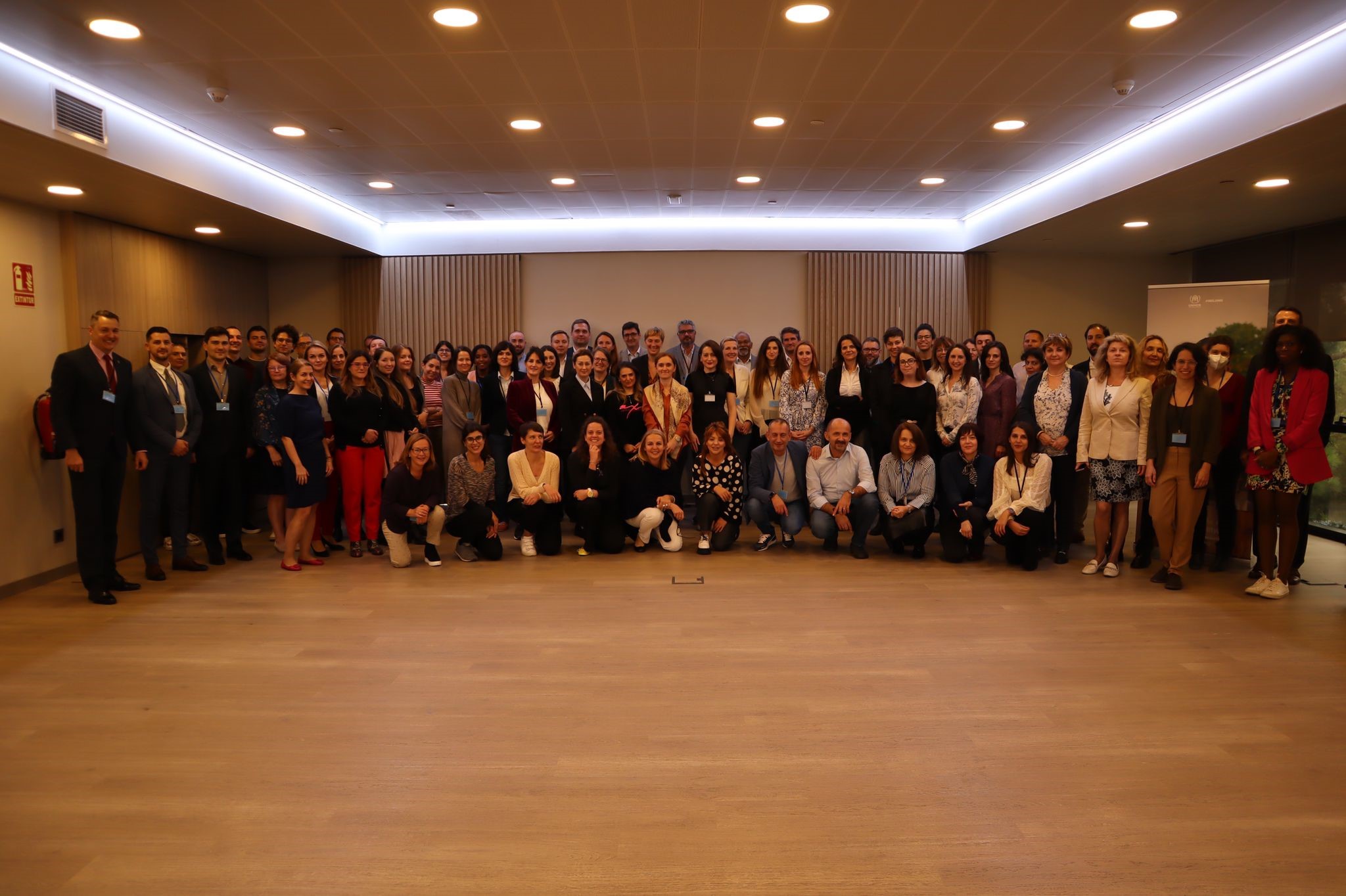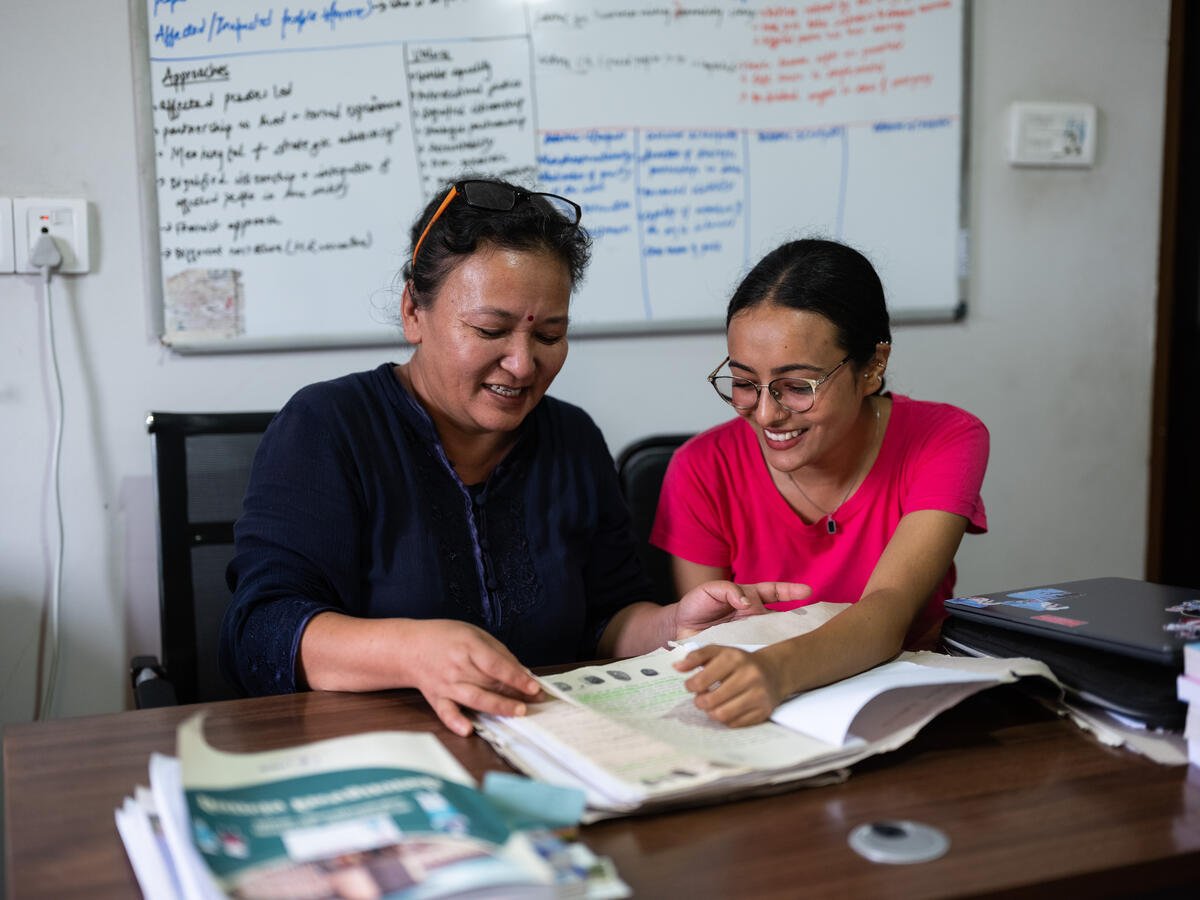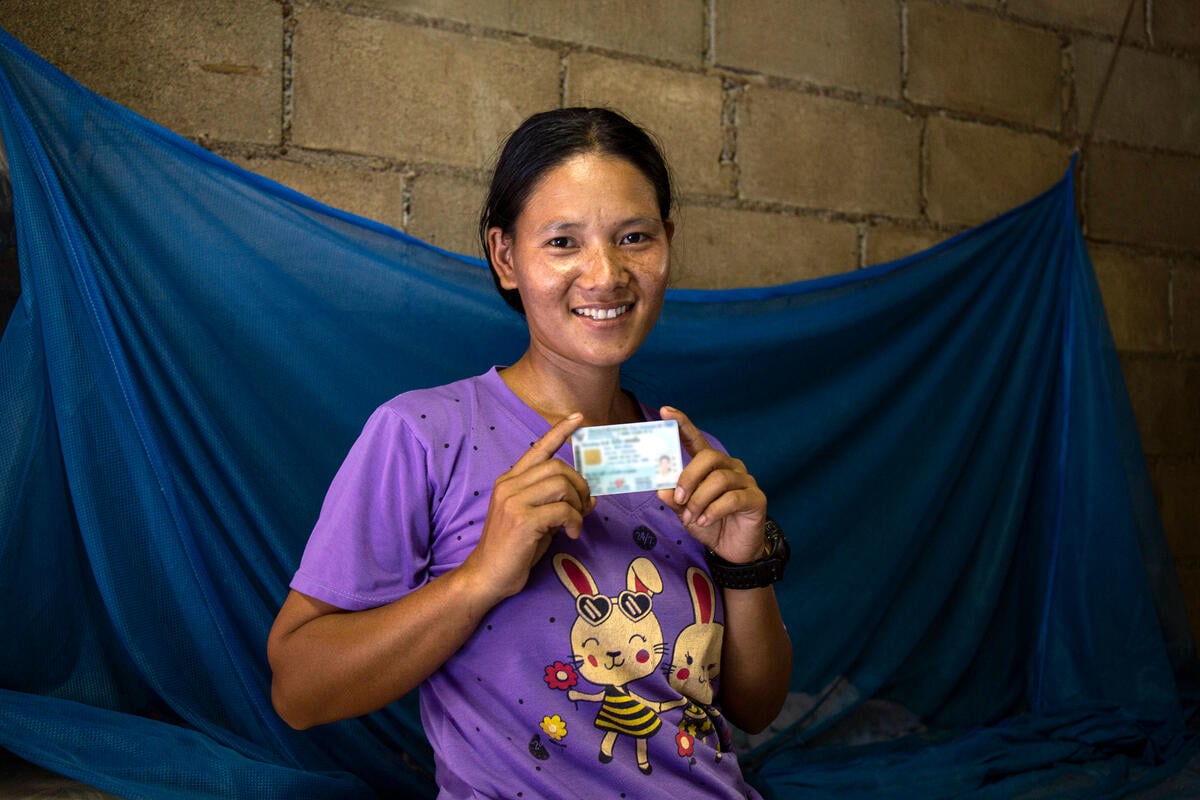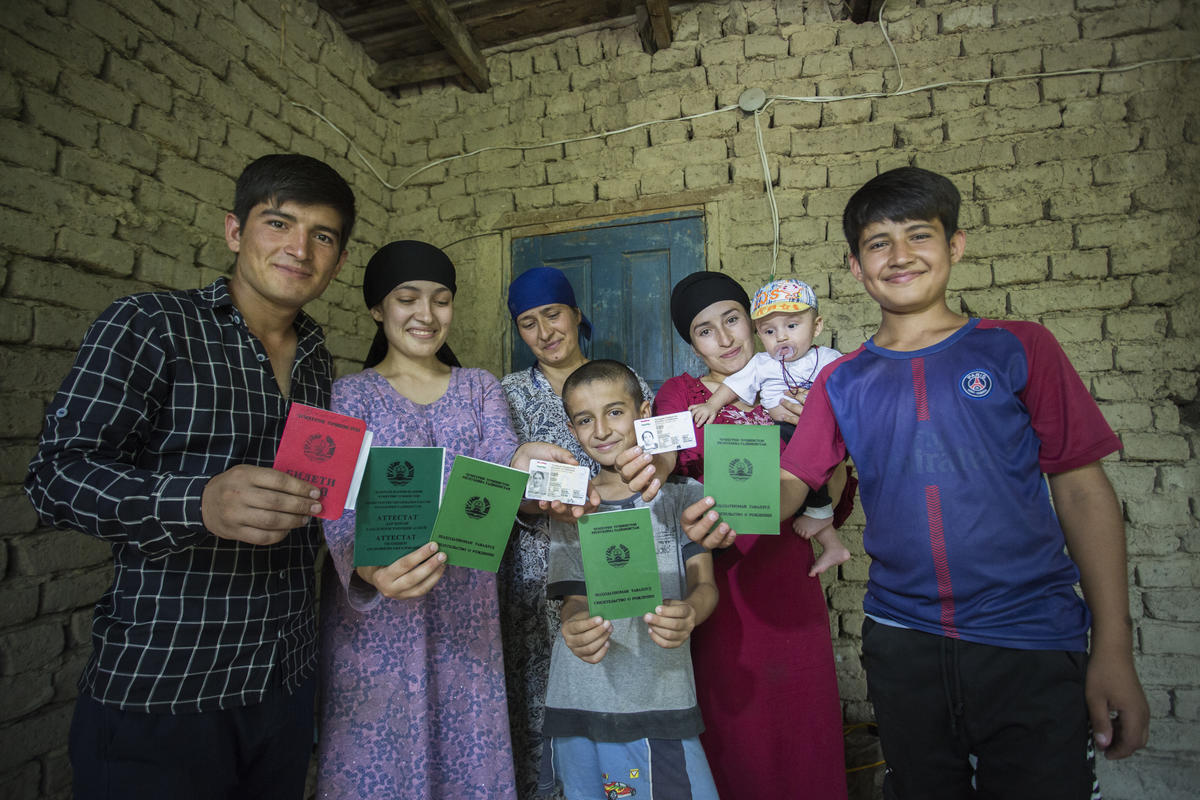Ukraine, Sri Lanka provide models for solving statelessness
Ukraine, Sri Lanka provide models for solving statelessness

GENEVA, Oct 6 (UNHCR) - UN High Commissioner for Refugees Ruud Lubbers on Wednesday reminded states that there are several million stateless people in the world today and introduced Ukraine and Sri Lanka as positive examples of countries that had found resolutions for large groups of stateless people.
Lubbers was speaking during a special panel discussion taking place at the annual meeting in Geneva of the UNHCR's governing Executive Committee. The panel was part of a year-long effort to commemorate the 50th anniversary of a UN convention dedicated to improving the lot of stateless people, and drawing more attention to the huge, but little-known problem of statelessness.
"We have it everywhere," said Lubbers, citing a recent UNHCR survey of statelessness which revealed that it is a problem all over the world. However, there is far less information available about how many people are affected and the precise nature of their predicament, than is the case with refugees. Many countries simply have no idea how many stateless people there are on their territory. In other cases, there is little information available because the groups concerned are a highly sensitive issue in the domestic landscape.
A stateless person is someone who is not considered a national by any state - including the one where he or she is living - and thus is not protected by any national legal system. Stateless people cannot vote. Even worse, they may be unable to marry legally, or register the birth of their children, thus perpetuating the cycle of statelessness. They are often deprived of the right to do things that other people living in the same country take completely for granted: go to school, get a job, open a bank account or travel abroad.
Large numbers of people who are stateless today became so as the result of conflicts or because the state they were born in changed in some way. This was the case, for example, when the Soviet Union was disbanded, and 15 independent states rose in its stead, as well as after the splitting up of the former Czechoslovakia and former Yugoslavia into smaller states. Some stateless groups were also created when a number of African and Asian countries became independent from their former colonial rulers, and have still not had their situation resolved 40 or 50 years later.
Lubbers also cited "disputes between states concerning the legal identity of individuals, protracted marginalization of specific groups within the society, or sometimes - even worse - stripping individuals or groups of their nationality" as other prime causes of statelessness. Finally, some people are stateless because, for some reason (for example because a child is not permitted to take its mother's nationality), they have fallen through the bureaucratic cracks and wake up in a Kafkaesque land where they do not belong: "non persons, legal ghosts" as they were once memorably described.
"The perpetuation of these situations leads to a deepening sense of disenfranchisement of these populations which can eventually lead to displacement," said Lubbers in his opening remarks to the panel and the wider audience of government representatives attending the Executive Committee meeting. He added that the survey also showed that "many states lack proper mechanisms to allow them pre-emptively to identify situations leading to statelessness."
Two of the panelists came from countries which have recently made a major and successful effort to resolve the situation of large groups of stateless people on their territory.
Refat Chubarov, a member of the Ukrainian Parliament and deputy head of the Crimean Tartar Majlis, described how the government of the newly independent Ukraine brought in a succession of new legislation that has helped reintegrate the survivors and descendants of 250,000 Crimean Tartars who were rounded up by Stalin in 1944 and deported to Central Asia. When the Soviet Union disintegrated, the Crimean Tartars found themselves in a situation where, if they headed home to the Crimean Peninsula, they ceased to be citizens in Central Asia, but equally were unable to re-establish themselves legally as citizens in Ukraine. A new citizenship law adopted hurriedly after independence solved some problems, but also created new ones.
Over the past decade, however, Ukraine - with help from UNHCR and with Chubarov himself playing a leading role - has passed a string of legislation that has gradually untangled the bureaucratic nightmare that had snared the returning Tartars. The complexity of the problem was not just confined to Ukraine itself, but often involved the legislation of other states as well.
"Ukraine has constantly initiated contacts with other CIS states," said Chubarov, "to help returning deportees obtain citizenship." A major breakthrough in this respect came in the form of a 1999 agreement between Ukraine and Uzbekistan (where the majority of Crimean Tartars had been deported), which made it possible for them to leave Uzbekistan legally, and as a result begin the process of reinstating themselves legally in Ukraine.
"In January 2002," said Chubarov, "Ukraine adopted a new law on citizenship that has lifted all the remaining flaws in the legislation." By 2004, more than 300,000 Crimean Tartars had returned home and received Ukrainian citizenship.
Another member of the panel, Rahmiat Yogarajan, a former member of the Sri Lankan Parliament and Vice President of the Ceylon Worker's Congress, described how Sri Lanka has managed to resolve the problem of hundreds of thousands of people of Indian origin, who had originally been imported by the British to work in tea plantations, but were then made stateless by new legislation brought in after Ceylon - as it was then known - was granted independence in 1948 (see full story of Sri Lanka's efforts to resolve the problem of its stateless people tomorrow).
There are two UN conventions on statelessness: the 1954 Convention relating to the Status of Stateless Persons, which has been acceded to by only 57 states, and the 1961 Convention on the Reduction of Statelessness, to which a mere 29 states have acceded. This compares with the 1951 refugee Convention and its Protocol, which have been acceded to by 145 states in all.









